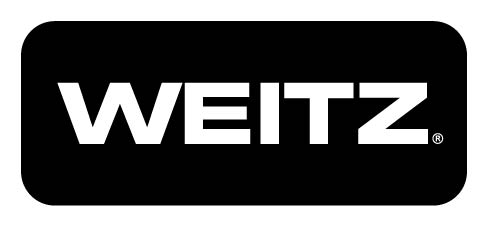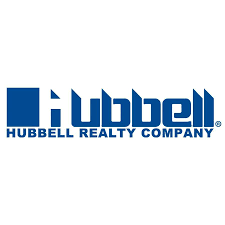Creating connections to nature
A pedestrian bridge planned over the Raccoon River in West Des Moines will create connections from ‘treetops down to the river bottoms’

KATHY A. BOLTEN Jul 13, 2022 | 7:06 pm
7 min read time
1,579 wordsBusiness Record Insider, Real Estate and Development
When Craig Erickson and his team at Shive-Hattery Inc. began discussing concepts for a pedestrian bridge over the Raccoon River, they spent a lot of time talking about connections.
People’s connections to water. Their connections to woodlands and flood plains. Grassy areas and trees.
Connections to the natural environment, “from the treetops down to the river bottoms,” said Erickson, landscape architecture studio leader at Shive-Hattery, which has an office in West Des Moines.
In June, the city of West Des Moines launched a capital campaign to raise $3 million in private donations for a pedestrian bridge that will span the Raccoon River, connecting Raccoon River Park and Walnut Woods State Park, and eventually connecting with the Great Western Trail.
Athene USA, which has an office building in West Des Moines, donated $750,000 to the project now called Athene Pedestrian Bridge.
To date, more than $2.5 million has been raised. Construction is expected to begin in early 2023 and be completed by mid-2024.
Pedestrian bridge project details
The project will include about 4,700 feet of paved trail that will start near Raccoon River Park’s entrance at 2500 Grand Ave., span the river and end near Hidden Valley Soccer Complex along Walnut Woods Drive. The bridge itself will be about 620 feet long – about 1 3/4 football-field lengths – and rest on five vertical support structures that will be hammered into bedrock deep below the river bottom. The bridge structure will be composed of a series of Corten steel trusses that will have a thin layer of protective rust that darkens with age and the bridge deck will be concrete.
The bridge’s deck will be about 30 feet above normal water levels of the Raccoon River, providing visitors with picturesque views that will change with the seasons, Erickson said.
At the bridge’s midpoint will be river overlooks with 16-foot-tall tree-like structures that will provide shade for visitors. The tree sculptures will be made of galvanized steel, that will reflect the water and sunlight.
The bridge will transition into a 60-foot-long elevated ramp as it enters the state park.
“As you come off this end of the bridge, you’ll actually see down through Walnut Woods State Park,” Erickson said. “It’ll be like you’re walking through the treetops and then you’ll be looking down on this forest floor that in the spring and summer may be flowering.
“It will be a cool experience.”
Why the bridge is needed
The idea to build a pedestrian bridge across the Raccoon River has been part of West Des Moines’ bicycle master plan for more than two decades, said Sally Ortgies, director of West Des Moines’ parks and recreation department. The two closest pedestrian crossings over the river are in Water Works Park to the east and along South Grand Prairie Parkway to the west.
“In between those two [pedestrian crossings] there’s no way for a pedestrian or bicyclist to safely get across the river,” she said.
Raccoon River Park was developed in the mid-1990s in an area where gravel and sand mining occurred between 1950 and 1991. The mining pits created what’s now called Blue Heron Lake.
Among the park’s features is a 3-mile gravel path around the lake and nearby wetlands. The Raccoon River and Walnut Woods State Park can be seen from a portion of the path. As the park’s popularity grew, requests for a connection between the city and state parks became more frequent, Ortgies said.
In 2016, West Des Moines’ elected officials asked Ortgies to put together a list of “quality of life” projects that would help West Des Moines attract people to live and work in the community, she said.
“We pulled a few projects that were already planned [including the pedestrian bridge] and added a few new ones,” Ortgies said. “It resulted in the Five Waters Project that establishes West Des Moines as an outdoor recreation destination and it put a focus on the city’s water resources.”
The Five Waters Project includes the Raccoon River Park Boathouse, Jamie Hurd Amphitheater, Marathon Loop, Raccoon River Greenway and the Athene Pedestrian Bridge. The projects have or will receive a portion of their funding from the local option sales and services tax, which was approved by Dallas County voters in 2017 and those in Polk County in 2019.
“I feel like the Five Waters Project played a part in the passage of both of those referendums,” Ortgies said. “We’ve got two projects done and now we’re moving on to the others.”
Planning and designing the bridge
Before designing the pedestrian bridge could move forward, a study of the river and its water flow was conducted to determine the best place to build the structure. When those studies were completed, designing the bridge began, Erickson said.
“We wanted to make a special experience out of crossing the bridge,” he said. “We spent a lot of time talking about water, the importance of water.”
However, projects designed around the theme of water are commonplace, Erickson said. So the team began exploring other theme ideas, eventually settling on trees. “You’ve got Walnut Woods across the river and the trees that line the river banks in [Raccoon River] Park,” he said. “When you think about it, the trees connect the forest floor and the sky.”
In addition to the tree-like structures on the bridge overlook, trees and leaves are prominent on the entry to the bridge on the Raccoon River Park side of the structure. Rusted steel sculptures of a piles of leaves will greet visitors as they enter the trail. Closer to the bridge will be a bigger rusted steel sculpture of leaves with trees made of galvanized steel.
Smaller versions of the sculptures will be placed on the Walnut Woods side of the trail, Erickson said. “Once we got the theme, everything else came together pretty quickly.”
Picking materials for the bridge
The most cost-effective way to span the river was with prefabricated metal truss systems, Erickson said. The rusted metal was selected because it doesn’t need painting, he said. The concrete deck was selected because it’s easy to maintain.
The design team spent some time discussing the bridge’s railing system, Erickson said. “If we made the railing super fancy, the cost was going to go through the roof very quickly. …
“We decided to keep the bridge and railing systems simple and to spend dollars on experiences – the experience of coming onto the bridge, the experience of the overlook, the experience of coming off the bridge.”
The bridge designers wanted the structure to minimally affect Walnut Woods State Park, Ortgies said. To attain that goal, the bridge remains elevated for several feet, lessening the number of trees that will need to be removed. Keeping the bridge elevated also avoids disruptions of views of the river from the park, she said.
“The last thing I wanted to do … was change the feel of the state park,” she said. “There are a lot of people that love the park, and we didn’t want to do anything that had a negative impact on it.”
Construction is expected to begin in early 2023, when the river’s water levels are low, Erickson said. The goal is to have the three piers, or support pillars, in the river before water levels begin rising in the spring. When that work begins and can be completed will be dependent on the weather.
“You are dealing with a river environment and it can change overnight – it can go from being great to not being able to get in there for two months,” he said.
Construction of the bridge and connecting trails is expected to take about 18 months to complete, Erickson said.
“This bridge, as a connector, is going to be super cool,” Erickson said. “Once the south end of the trail is connected to the future trail systems, this is going to become a major trail hub for the west side. …
“It’s important to understand the significance not only of what’s happening today but how it ties into the vision [of the Five Waters Project] and the excitement it’s going to create.”
More about the Five Waters Project
Included in West Des Moines’ Five Waters Project are:
- Raccoon River Park Boathouse, which opened in July 2020 at 2500 Grand Ave. The $2.4 million boathouse, located on Blue Heron Lake in the park, includes restrooms and offers a variety of nonmotorized boat rentals. The boathouse rented 7,000 boats in 2021 between Memorial Day and Labor Day.
- Jamie Hurd Amphitheater, which opened in September 2020 at 4100 Mills Civic Parkway. The 1,550-square-foot amphitheater, which cost $2.4 million to develop, includes an outdoor lawn that can seat up to 2,000 people. In 2021, 76 events were held at the amphitheater, which overlooks Civic Campus Pond.
- Marathon Loop, a 26.2-mile trail connecting Valley View Park, Southwoods Park, Raccoon River Park and a future park. Portions of the trail, which is 50% completed, follow Jordan Creek. Future sections of the trail will meander along the Raccoon River and Sugar Creek. Development is expected to be completed in the coming years.
- Raccoon River Greenway, areas adjacent to about 17 miles of the river that will include hiking and cycling trails and woodlands. Additional access points to the river and potential camping are also being planned.
- Pedestrian bridges over the Raccoon River. Construction of the Athene Pedestrian Bridge is expected to begin in early 2023 and be completed by mid-2024.








